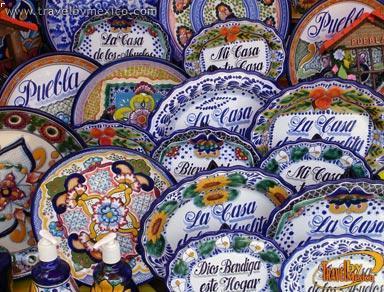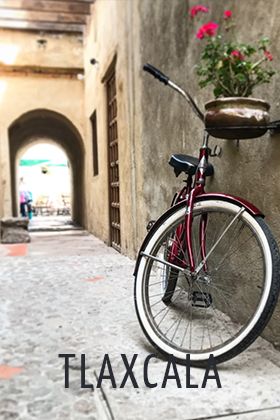The Fine Art of Talavera
by: Travel by México

The Fine Art of Talavera
by: Travel by México
The fine pieces of Talavera Pottery are exquisite works of art. Each piece is unique in that it is decorated by hand, giving it a special value.
Historians say that the pottery originated in Arabic countries, and then was taken on to Spain during the invasions, and then to the rest of Europe. During that time, the pottery pieces were white and coated with tin.
Around the mid-sixteenth century, groups of monks from the old world began to bring ceramic tiles over to the Nueva Espana, from the Spanish town of Talavera de la Reina, especially to one major city in particular: Puebla. Here they founded the first ceramic factories.
The influence of the designs were clearly Moorish, but it was then when the pieces began to be decorated with blue white. But soon after, other distinct features would begin to arrive to the colony: Chinese porcelain. Thus, the potters began to take a bit from each of the cultures, in addition to placing their own personal stamp on the art.
In 1604, a native craftsman from the town of Talavera, Diego Gaytan, moved to Puebla, and it is clear that the influence of his homeland did not stay on the boat once he arrived.
The trade of potter became increasingly popular, so that it became necessary for the Viceroy to regulate the trade. In 1653, he wrote the ordinances which clearly established the conditions for practicing the profession. They began to distinguish the qualities of the ceramics: fine, common and yellow. This also defined the proportions of the mixes to conserve the quality. During a period of time, the pottery used clearly distinguished the social classes, but it never stopped being used amongst all the classes.
At that time, only the Spanish and the natives could produce the pieces, yet over time, that eventually changed. In the early 19th century, artisans introduced colors and paint to the pottery, which achieved a great and rich mixture of streams, colors, shapes, and textures. Bright blue, yellow, green, orange, blue and black combined to result in the unique polychromy of this art form.
Today, there are pieces of pottery, tiles and more and more items produced that are limited only by the imagination. But it is not only Mexico that appreciates this unique art form. There are increasingly more countries were Talavera Pottery is popular. Talavera, the worthy representation of Puebla culture.



















